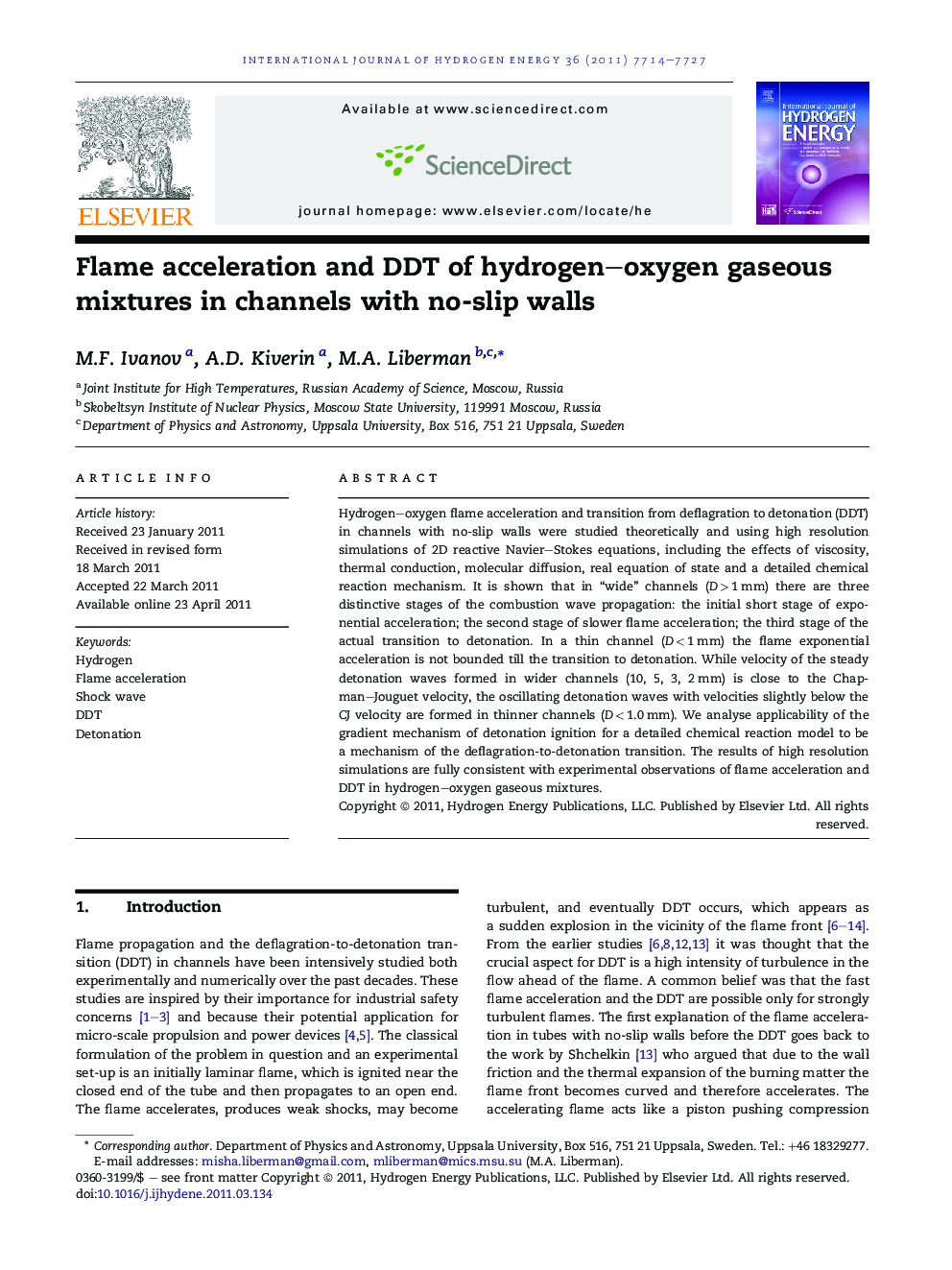| Article ID | Journal | Published Year | Pages | File Type |
|---|---|---|---|---|
| 1279301 | International Journal of Hydrogen Energy | 2011 | 14 Pages |
Hydrogen–oxygen flame acceleration and transition from deflagration to detonation (DDT) in channels with no-slip walls were studied theoretically and using high resolution simulations of 2D reactive Navier–Stokes equations, including the effects of viscosity, thermal conduction, molecular diffusion, real equation of state and a detailed chemical reaction mechanism. It is shown that in “wide” channels (D > 1 mm) there are three distinctive stages of the combustion wave propagation: the initial short stage of exponential acceleration; the second stage of slower flame acceleration; the third stage of the actual transition to detonation. In a thin channel (D < 1 mm) the flame exponential acceleration is not bounded till the transition to detonation. While velocity of the steady detonation waves formed in wider channels (10, 5, 3, 2 mm) is close to the Chapman–Jouguet velocity, the oscillating detonation waves with velocities slightly below the CJ velocity are formed in thinner channels (D < 1.0 mm). We analyse applicability of the gradient mechanism of detonation ignition for a detailed chemical reaction model to be a mechanism of the deflagration-to-detonation transition. The results of high resolution simulations are fully consistent with experimental observations of flame acceleration and DDT in hydrogen–oxygen gaseous mixtures.
► Hydrogen–oxygen flame acceleration was studied using a detailed chemistry. ► Transition from deflagration to detonation in channels with no-slip walls is studied. ► The difference in the flame acceleration in a thin and in a wide channel is outlined. ► Applicability of the gradient mechanism of detonation ignition in DDT is analysed.
